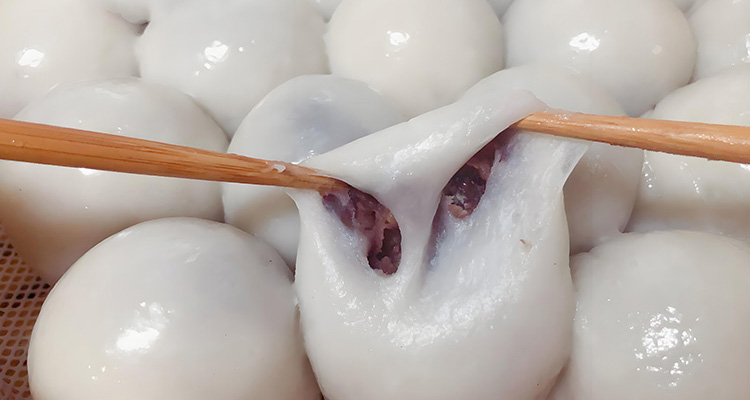Sticky Bean Bun: Northeast China’s Cozy Breakfast Treat
1. Origins and History
The sticky bean bun, or “粘豆包” (zhān dòu bāo), comes from the Manchu culture of Northeast China. Historically, it was a winter staple, easy to store and carry through long, cold months. Over centuries, it became a cherished family recipe. Today, it is a symbol of Northeast Chinese culinary heritage and warmth.
2. Cultural Significance
Beyond its flavor, the sticky bean bun carries cultural meaning. It is often served during Lunar New Year and family gatherings, symbolizing unity and abundance. Sharing these buns represents hospitality and community. Eating one feels like stepping into the heart of local life.

3. Ingredients and Preparation
Key ingredients are simple yet flavorful. The dough is made from glutinous rice flour, giving it a sticky, chewy texture. The filling is sweet red bean paste, prepared by cooking adzuki beans with sugar until smooth.
To prepare, roll the dough, add the filling, shape into small buns, and steam until translucent and sticky. The result is a soft, chewy bun with a sweet center that warms both body and soul.
4. Flavor and Texture
The bun offers a unique mix of textures. The dough is soft and elastic, while the red bean paste is sweet and smooth. Freshly steamed, the bun is tender and sticky. Cold buns become chewier, offering a slightly different experience. Each bite is a little dance of sweetness and chewiness.

5. Serving Suggestions
Enjoy sticky bean buns for breakfast with hot soy milk or millet porridge. Some like to dip them in sugar or drizzle honey. Pairing with local pickled vegetables adds a sweet-and-salty contrast that enhances the experience.
6. Where to Enjoy
While available across China, sticky bean buns shine in Northeast cities like Harbin and Shenyang. Family-run restaurants and breakfast stalls serve freshly steamed buns at affordable prices. Ask for “a few sticky bean buns” and enjoy them hot for the best experience.

7. Making It at Home
You can try a simple homemade version. Mix glutinous rice flour and water into a dough, fill with store-bought red bean paste, and steam for 15–20 minutes. While it may not match traditional fermentation, it captures the essence of this cozy breakfast.
8. Variations and Modern Twists
Modern variations add creativity. Fillings like black sesame or lotus seed paste offer new flavors. Some buns use pumpkin or matcha in the dough for color and taste. Yet the original sweet red bean filling remains a favorite.
9. Conclusion
The sticky bean bun is more than a breakfast—it’s a cultural bridge. It embodies warmth, tradition, and Northeast China’s hospitality. Eating it connects you with local life, making it a must-try during your travels. Include it on your Northeast China itinerary for a memorable taste of the region’s snowy landscapes and rich culture.


